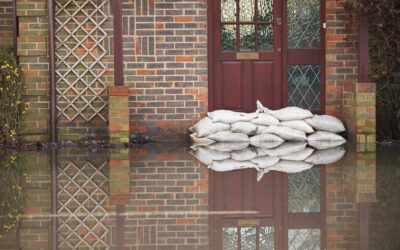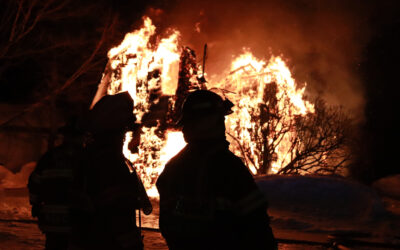The perception that preparing for climate change means big infrastructure projects such as building sea walls seems all too common. Unfortunately, engineered solutions alone won’t cut it. In order to build resilience to climate change across our country, infrastructure improvements will need to parallel investments in communities, housing, and healthcare. Fortunately, these investments can pay big dividends in our communities — and not just when fire barrels down Main Street.
Climate risk interacts with economic and social factors
Let me draw on a very specific example. Over the last two years, I lived in Whitehorse, Yukon. I spent some of my time there as a policy analyst working on emergency preparedness. I also participated in emergency response activities as a volunteer. Between those two roles, I learned that wildfires are one low probability, high consequence climate-related event that preoccupies many families living in Whitehorse, Yukon.
In particular, a wildfire that started south of town might travel up the river valley and hit the 25,000 person community with full force. This was the scenario of the Operation Nanook annual training last summer. As the worst-case scenario goes, a main road in and out of Yukon would be cut off by flames, the Whitehorse airport would be shut down due to smoke, and a traffic jam on the one remaining road out of town would slow evacuations to a trickle.
While all Whitehorse residents are somewhat vulnerable in this scary situation, people will be at risk for different reasons. Homes outside of town and in the shadows of dense boreal forest are most at risk to the direct exposure of fire. People who do not own a car, who do not have flexible work schedules, and that are new to Yukon may be slowest to react or unable to leave quickly. Individuals that have chronic health conditions will be most vulnerable to smoke. People without secure housing will be at high risk if a “shelter in place” order is given.
After the fire blows through, people who do not have strong social or familial networks in the territory may struggle to get the emotional and physical support they need. When the long and painful process of recovery starts, families without large savings accounts could be challenged during the wait for insurance payouts. For others, insurance premiums could increase and make their long-time home unaffordable.
Building Resilient Communities
It is challenging for a community to be resilient to climate change tomorrow if all its citizens aren’t prospering today. The challenge is not just to reduce exposure to hazards, but to ensure that households – especially the most vulnerable – can absorb the additional stress of climate change.
In fact, there is strong evidence that many social adaptations have greater return on investment than built infrastructure. The Global Commission on Adaptation highlighted in a recent report that early warning systems, safeguarding ecosystem services, and adapting agricultural practices have can have returns on investment as high as $8 for every $1 invested.
The Government of Yukon has employed many of these fiscally beneficial solutions in their recently released draft climate change strategy. In addition to increasing FireSmarting and selectively placing fire breaks, the territory is proposing to add weather stations that increase early warning and prediction. Proposed insurance reforms have potential to reduce costs for homeowners in the short term and better protect policyholders if there is a loss. Investments in healthcare services from telemedicine to health surveillance can improve the wellbeing of Yukoners whether or not a fire sweeps through their community.
Additional examples of climate adaptation policies that dually serve to improve communities today include:
- Up-zoning and land use changes that increase home affordability, reduce greenhouse gas emissions, and limit development in high risk zones
- Legislation that restricts the ability of insurers to cancel insurance policies quickly and limits the amount that insurers can increase premiums after a disaster
- Policies that promote economic diversification and career stability can safeguard against economic impacts from a disaster and helps communities prosper
Multiple benefits
It’s easy to fall into the trap of focusing only about the costs of policy. Yet it’s equally important to consider the full range of benefits. Social adaptation can increase communities’ resilience and support local economic activity, reduce homelessness and food insecurity, and support healthy ecosystems. That’s a cost-effective solution that is worth paying attention to, for multiple reasons.
Photo by Jay Hsu




